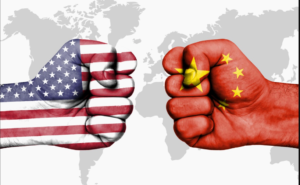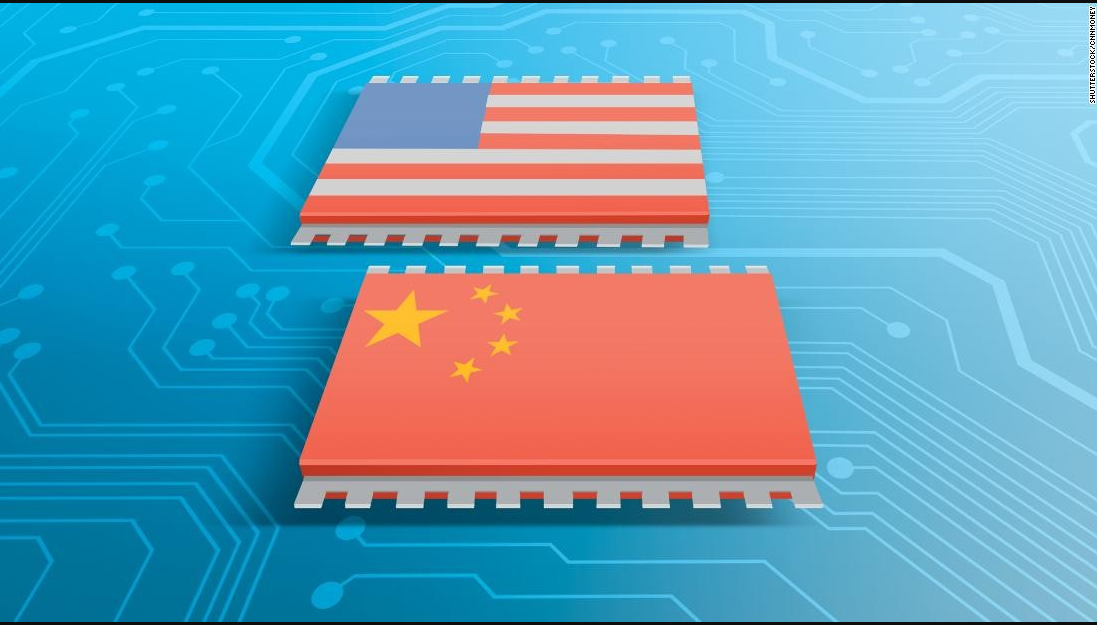The United States and China tech conflict has developed towards a high-stakes struggle for dominance in the international tech industry as both nations compete to be leaders in the latest innovations and set new worldwide benchmarks. This complex rivalry affects not only their financial systems but also international tech distribution networks, partnerships, and standards. Both nations are investing heavily in areas like the area of biotechnology gadgets, and 5G, which will have a big impact on the remaining part of the world.
The US-China Tech Competition’s History
The US-China technology rivalry began as a result of China’s ambition for advancement and America’s early leadership in the development of technology. Over the past few years, the financial system of China has evolved from an industry leader to one that is driving development. In the meantime, the US has maintained its leading position in the global IT sector because of its strong research institutions and technical giants.
As China’s economic clout grew, the US implemented technology sanctions to restrict Chinese access to critical technologies, further intensifying the geopolitical tech conflict. Both nations now view technology competition as a key element of national power, with each attempting to outpace the other in emerging technologies.
The Semiconductor War’s Effect on the Economy
The core of the tech dispute between the US and China is the rivalry for semiconductor components. The supremacy of technology worldwide depends on electronic components, which are present in every detail from smartphones to extremely sophisticated weaponry. The US used to be a leader in semiconductor development, but China is quickly developing its own capabilities to reduce the need for US technology.
The US has restricted Chinese companies like Huawei’s access to cutting-edge semiconductor technology in recent years by enacting technical restrictions against them. As a result, China’s national technological sector has had to expand quickly.
This technology rivalry affects global tech distribution networks outside of the US and China and forces other nations to reevaluate their technical alliances. Achieving semiconductor independence could change international tech norms and tip the scales in China’s favor, impacting the creation and dissemination of technology.
5G Competition: The Race to Define Future Connectivity
5G competition is another major front in the US-China tech rivalry. Technologies of 5G enables faster internet speeds and connects more devices, powering applications like autonomous driving and smart cities. China has taken an early lead in 5G competition, deploying networks rapidly and making affordable 5G devices accessible globally.
The US, concerned about national security and potential surveillance risks, has implemented technology sanctions on Chinese telecom firms like Huawei. These actions have effectively limited Chinese 5G technology’s market reach in the US and other Western countries. The 5G competition also affects nations caught between adopting US-approved networks or facing potential restrictions on partnerships.
The rivalry has led to divided tech supply chains for 5G infrastructure, with countries and companies forced to pick sides. As the geopolitical tech conflict continues, the impact of the 5G competition on global connectivity standards could shape the digital future of millions worldwide.
Innovative Tech Open Up New Frontiers regarding the US-China Race
China and the US are both making significant investments in the industries including the field of biotechnology, atomic processing of information, and advancements in renewable energy sources as part of their struggle for global technological supremacy. These innovations are a great asset in the US-China innovation race since they have the potential to revolutionize a variety of industries, most notably agriculture and energy.
For instance, developments in biotechnology may result in improvements in fields like agriculture and medicine, and quantum computing may revolutionize sectors like information safety and encryption. The US’s substantial federal investment in research and China’s National Quantum Laboratories serve as prime examples of the competition to take the lead in these areas. This technology competition shapes not only the future of innovation but also impacts other countries’ access to critical tech, as each side secures an advantage.
As both superpowers pour resources into emerging technologies, the divide in tech supply chains widens, with other nations often dependent on either the US or China for specialized components and knowledge. The US-China innovation race in these frontier technologies could set the pace of global progress, creating potential opportunities and challenges for the rest of the world.
Sanctions on Technology and Their Worldwide Repercussions
Chinese companies are subject to a number of technical sanctions imposed by the US, which limit their access to vital parts and their capacity to import important technological resources. The goal of these technical restrictions was to impede China’s technological progress, especially in delicate areas like telecommunications and semiconductors.
The geopolitical tech conflict resulting from these sanctions is also influencing other nations to diversify their suppliers, reducing dependence on any single country. As these technology competition dynamics evolve, nations are recalibrating their tech strategies, creating a more segmented global market.
US Tech Policy and the Geopolitical Tech Conflict
US tech policy has increasingly focused on maintaining global tech dominance while safeguarding national security. Restrictions on Chinese tech companies, especially those thought to pose a danger to US interests, have been prompted by this policy framework. As part of a larger plan to thwart China’s rise, key areas include data privacy, supply chain security, and combating intellectual property theft.
With the US fortifying its relations with other Western countries and pressing them to reduce their dependence on Chinese technology, the geopolitical tech struggle is changing alliances. Particularly in vital industries like semiconductors, policies such as the CHIPS Act encourage American businesses to increase their local production and lessen their reliance on foreign technology.
On the other hand, China has implemented its own tech policies to strengthen self-sufficiency, with government-backed programs to support industries that are vulnerable to US sanctions. As this geopolitical tech conflict unfolds, it is shaping a divided tech world where countries and companies must align with one of the superpowers.
The Effects of the US-China Technology Competition Worldwide
There is a huge global impact from the rivalry between the two tech titans, China and the United States. The technological battle between these two nations affects how technologies are accessed and employed globally. Affecting everything from cyberattacks to electronic regulations. Depending on their partnerships, developing nations may have restricted access to cutting-edge technology like 5G, quantum computing, and biotech breakthroughs.
With other countries picking sides according to their national interests and technological needs, the US-China innovation race has paved the way for new geopolitical alliances. As they pursue their own technological achievements, nations like South Korea, India, and the EU are negotiating this complicated environment by striking a balance between their ties with China and the US.
As a result, countries must carefully weigh the ramifications of siding with either giant in the increasingly fractured global tech sector. The repercussions on international industries and consumers might reshape the tech landscape for decades to come as the competition in technology heats up.
Conclusion
The US-China tech competition is reshaping global tech dominance and impacting nations worldwide, marking a pivotal shift in technological history.
